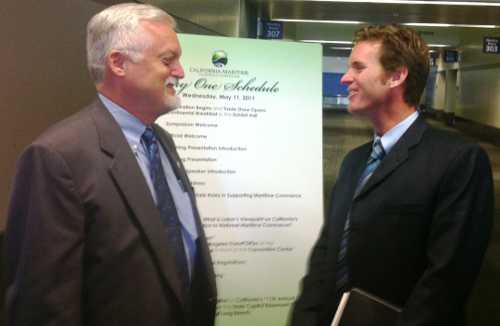LAKE COUNTY, Calif. – The State Controller's Office has released the latest round of local government salary and benefit figures, detailing the pay rates and numbers of employees for dozens of county special districts.
State Controller John Chiang updated his Web site April 26 with the new local government payroll information, part of an effort launched last year in the wake of salary concerns that arose in the southern California city of Bell.
The information, which covers calendar year 2009 both for elected officials and public employees, can be found at the Local Government Compensation Reporting Web site, http://lgcr.sco.ca.gov/.
The Web site shows minimum and maximum salary ranges; actual wages paid; applicable retirement formulas; contributions by the employer to the employee’s share of pension costs; contributions by the employer to the employee’s deferred compensation plan; employer payments for the employee’s health, vision and dental premium benefits; and also shows employees who hold multiple positions within a single local government.
Last October, Chiang began posting the information in four phases, beginning with wages and benefits of what his office said totaled more than 600,000 city and county employees.
That was followed in February and March by information from 1,285 special districts across the state, the Controller's Office said.
The third phase – launched last week – includes almost $357 million in payroll reported by 533 local agencies, according to the state.
The latest figures Chiang's office posted include the salary, pension benefits and other employee compensation for several hundred cemetery, electric, financing and construction, facilities, flood control and water conservation, recreation and park, and community service districts.
Chiang's office has planned the fourth and final phase – which will include any remaining special districts, such as library, mosquito abatement, conservation, air quality and airport agencies, and state employees' compensation – to be posted in June.
The newest information for Lake County shows 33 special districts. Seven of them are among the final phase that must submit information later this spring.
The state reported that 84 percent of all special districts in the third phase followed the new reporting requirements. All Lake County districts and local governments appear to be in compliance, based on a review of the list of agencies that failed to file in time. Each noncomplying agency could face a penalty of $5,000.
The site is updated weekly with any new information submitted, Chiang's office said.
A look at the districts
In-depth information on the special districts is available at the site, but the following is a summary of the salary ranges.
Among the districts, a small number only have unpaid board positions and no salaried employees.
Those districts include Adams Springs Water District, Butler-Keys Community Service District, Glenbrook Cemetery District, Middletown Cemetery District, Lake Transit Authority and Reclamation District No. 695.
Among the community service districts, Hidden Valley Lake Community Service District is one of the largest, serving an estimated 2,200 residences, according to district staff.
The district reports that it “provides safe drinking water that meets all State and Federal standards, maintains a sewer treatment facility that disposes wastes in an effective and efficient manner, and provides reclaimed water to the Hidden Valley Lake Golf Course.”
It has five board members, each paid up to $1,200 annually, and 12 paid employee positions, the highest being the general manager, a position currently held by Mel Aust, who receives $185,532 in compensation annually, along with $15,303 in health, dental and vision coverage, according to the data.
Clearlake Oaks County Water District has six unpaid board positions and 10 paid employees. The highest paid position is general manager, held by Darin McCosker, who received $97,327 in salary for 2009. No benefits were listed.
County Water Works District No. 1 (Lake) has five board members who received between $150 and $254 for 2009. There are six paid employees; the general manager received $82,506 and $700 in health benefits.
Callayomi County Water District has five unpaid board positions. It also has four paid positions, once again led by the general manager, who received $74,768 plus $3,265 in benefits for 2009.
Konocti County Water District's five board members receive up to $1,400 annually, and their general manager received $67,871 in salary for 2009, the highest of the district's eight paid employees, along with $8,811 in benefits.
The Cobb Area County Water District has five unpaid board members and an unpaid district secretary, with seven other paid positions. The general manager received $64,320 in salary and $22,464 in benefits.
Buckingham Park Water District has five unpaid board positions and five paid positions, ranging from $8,091 for a utility worker to $51,548 for the general manager.
There are five board members, paid up to $594 annually, in the Upper Lake County Water District, which has only two paid staff – an assistant operator, paid $30,548 with $594 in benefits, and the general manager, paid $47,203 and $5,360 in benefits.
Kelseyville Cemetery District's four board members are unpaid. It has only two paid positions, a groundskeeper that received $26,238 in pay and $1,720 in benefits, and a superintendent who was paid $46,211 in salary and $19,236 in benefits.
Lower Lake Cemetery District pays each of its board members $1,875 annually. Its four paid employees range between $17,305 for a grounds superintendent, who received $8,710 in benefits, to a sexton who was paid the same in benefits and a salary of $41,974.
Hartley Cemetery District has five unpaid board members, and three paid positions, from a maintenance assisting, paid $15,513 with no benefits, to the supervisor, paid $40,480 and receiving $22,464 in benefits.
The Upper Lake Cemetery District has five unpaid board members and three paid positions, ranging from a maintenance assistant who received $1,940 in 2009 to the supervisors, who was paid $29,582 and $1,388 in benefits.
Like most of the special district, the Redbud Healthcare District has five unpaid board members, and one paid position, a manager, who received, $23,153 and no benefits.
The Anderson Springs Community Services District has five unpaid board positions and two water operators, with salary maximums of $43,680 and $37,440, but who were paid only $14,091 and $2,288, respectively, in 2009.
Fire district data included
The county's fire districts were included in the latest data release. The districts have large numbers of paid employees, but many are part-time or seasonal.
Northshore Fire Protection District, which covers the entire Northshore area and is the largest fire district by area in California, has six board members who were paid between $350 and $965 for 2009. It has 62 other paid positions, the highest of which is the fire chief, a position held by Jim Robbins, who is paid $91,447 annually, with $7,398 in benefits.
Lake County Fire Protection District, which covers Clearlake and Lower Lake, has seven unpaid board members and 37 paid positions. Its chief, the highest-paid employee, received $102,835 in 2009 with $8,273 in benefits.
South Lake County Fire, the third-largest fire district by size in the state, has five board members who were paid between $700 and $1,200 for 2009. Among the 28 other paid positions, the highest paid was a fire engineer who was paid $22,614, with no benefits. The district contracts with Cal Fire, which covers additional salary costs.
Kelseyville Fire Protection District is led by a five-member, unpaid board. There are 49 paid positions; the highest salary paid was $87,530 to an engineer paramedic. Mike Stone, who took the chief's job later that year, didn't draw a full salary and was paid $39,071 with no benefits. No salary range was given for his position for the 2009 time period.
Lakeport Fire Protection District's five directors were paid between $1,000 and $1,200 for 2009, while among the 39 paid positions the highest salary, $84,981, was for Chief Ken Wells, who also received $18,336 in benefits. A few firefighters were paid more than Wells that year; Wells attributed those instances to payments out for a retirement and to overtime.
Lake Pillsbury Fire Protection District has five unpaid board members and 21 paid firefighter positions, ranging between $8 and $680.
E-mail Elizabeth Larson at This email address is being protected from spambots. You need JavaScript enabled to view it. . Follow Lake County News on Twitter at http://twitter.com/LakeCoNews , on Facebook at http://www.facebook.com/pages/Lake-County-News/143156775604?ref=mf and on YouTube at http://www.youtube.com/user/LakeCoNews .

 How to resolve AdBlock issue?
How to resolve AdBlock issue? 








